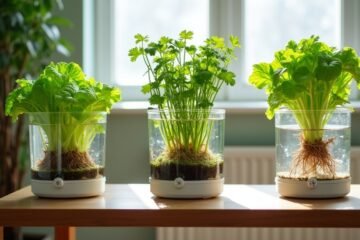Want your balcony to blossom into a lush paradise? Start with native plants that thrive effortlessly! Incorporate vibrant wildflowers and aromatic herbs, and watch them attract local pollinators like bees and butterflies. Consider rainwater harvesting – it’ll save you bucks and nourish your plants during dry days! Don’t forget composting! Turning kitchen scraps into soil gold energizes your greens. Mix in organic fertilizers for an extra kick, and soon your balcony will be the envy of the block! Keep going to discover even more tips!
Choosing Native Plants for Your Balcony
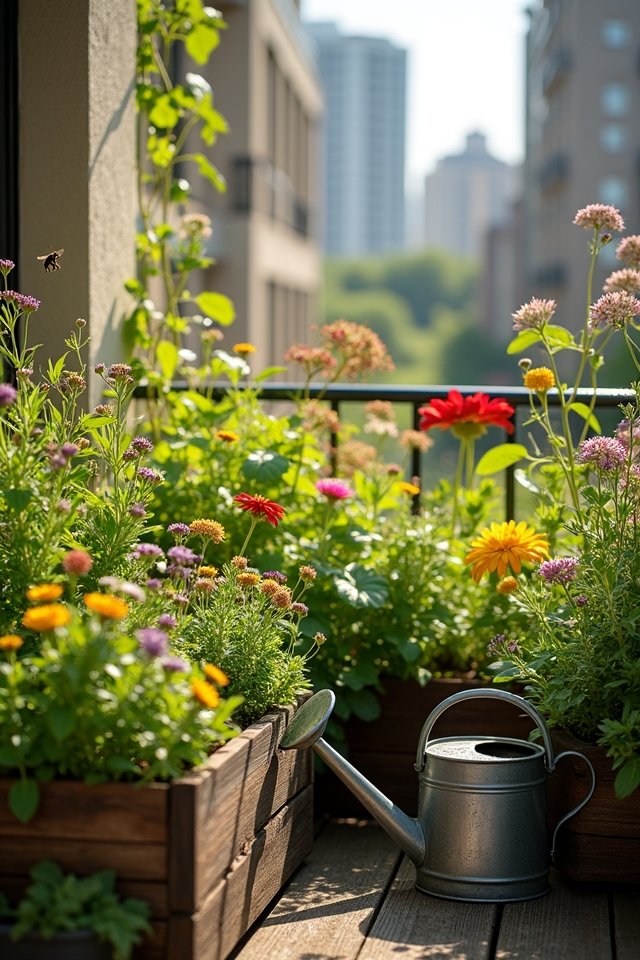
When you’re choosing plants for your balcony, think of it as picking your dream team for a garden party! Go for native plants—they’re like the local celebrities of the plant world, thriving effortlessly in your environment. Imagine vibrant wildflowers dancing in the breeze or herbs that fill the air with fresh scents! Your plant selection not only beautifies your space but also boasts incredible environmental benefits. Native plants attract local pollinators, helping to keep our ecosystems buzzing with life. Plus, they require less water and maintenance, making your gardening experience a breeze! So, why not invite these green gems to your balcony bash? Trust me, your garden party will be the talk of the town!
Implementing Rainwater Harvesting Techniques
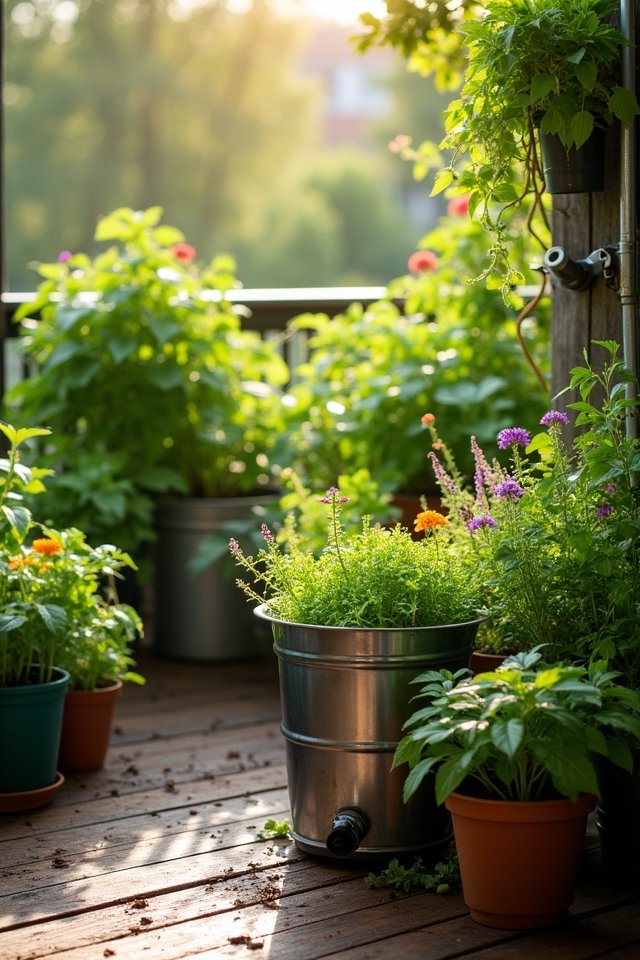
Imagine your balcony flourishing with lush plants, all thanks to the rainwater pouring down from the sky! By implementing rainwater harvesting techniques, you can transform that precious liquid into a lifeline for your garden. Start with rooftop collection systems—those clever gutters can direct rain into storage barrels. These barrels, your new best friends, can hold gallons of fresh rainwater to nourish your plants during dry spells. Just picture those thirsty greens sipping on nature’s own elixir! You can even add a simple filter to keep debris out. And hey, it’s eco-friendly and saves you money on watering! So, are you ready to catch some rain and watch your balcony thrive? Your plants will thank you!
Utilizing Organic Soil and Fertilizers
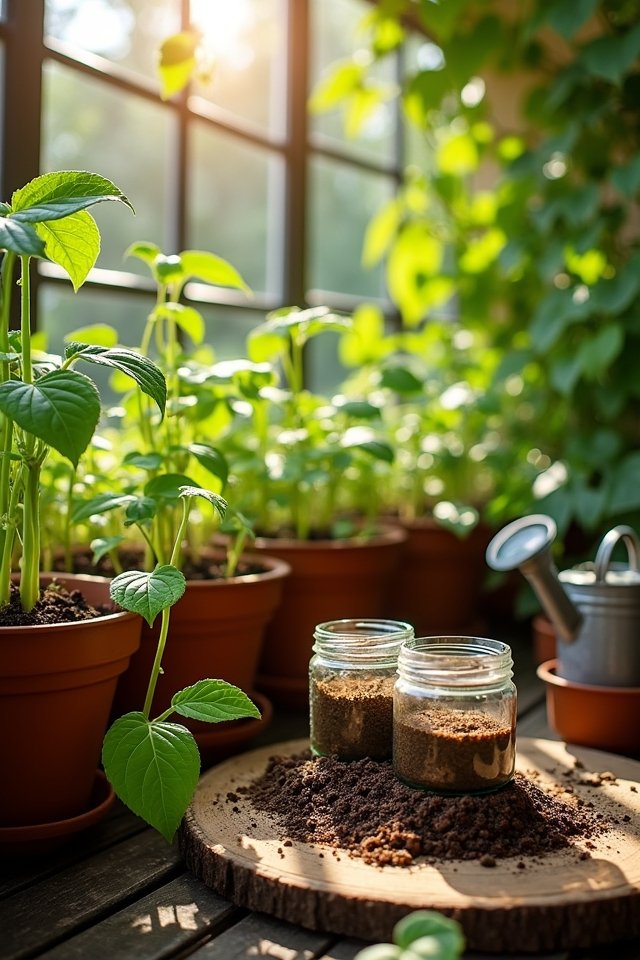
After you’ve mastered rainwater harvesting, the next step to a flourishing balcony garden is all about the soil and fertilizers you choose. You wouldn’t plant in a desert, right? So let’s make sure you utilize organic options! Here’s how:
- Choose rich organic soil: Look for blends that include compost and peat moss for that nutrient-packed goodness.
- Add soil amendments: Mix in things like perlite or vermiculite to improve drainage and aeration. Your plants will thank you!
- Opt for natural fertilizers: Think fish emulsion or seaweed extract for a boost that’s as invigorating as a summer breeze!
With these techniques, you’re not just growing plants; you’re nurturing a vibrant ecosystem on your balcony! Isn’t that exciting?
Creating a Composting System on Your Balcony

Creating a composting system on your balcony can be a game changer for your gardening journey! Imagine turning kitchen scraps into rich, fertile soil—talk about recycling magic! Start by choosing a compact compost bin; look for ones with ventilation to keep odors at bay. If you’re feeling adventurous, consider a vermicomposting system, where red wigglers do the heavy lifting for you, munching on your organic waste like tiny, efficient compost machines! Layer your greens and browns, and watch nature work its wonders. You’ll be amazed at how quickly your scraps transform into black gold! Plus, it’s a fantastic way to reduce waste. Why not give it a whirl? Your plants (and the planet) will thank you!
Attracting Pollinators to Your Urban Garden
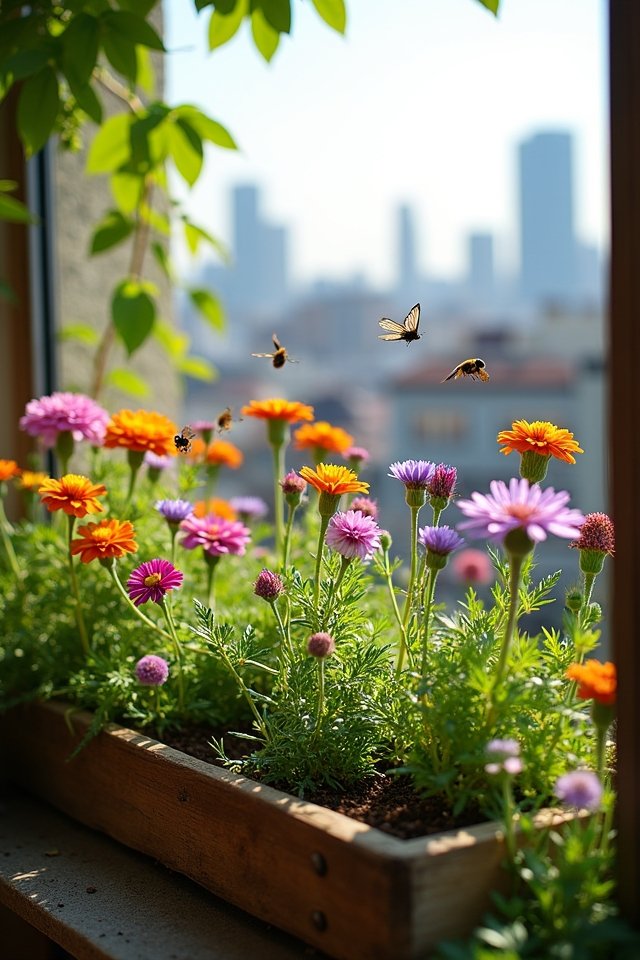
While you might think attracting pollinators is only for sprawling gardens, your balcony can be a buzzing haven too! Imagine the sweet hum of bees and the flutter of butterflies right outside your window. Here’s how to create that magical buzz:
- Plant for flower diversity: Choose a mix of colors and shapes—think lavender, sunflowers, and zinnias. This diversity invites different pollinators and keeps your space vibrant!
- Add bee hotels: These charming structures provide cozy homes for solitary bees. Hang one up, and watch them thrive!
- Avoid pesticides: Keep your garden chemical-free. Pollinators prefer a safe zone, and you’ll appreciate the peace of mind.
With these simple steps, your balcony will be a delightful retreat for nature’s little helpers!
Efficient Watering Practices for Sustainability
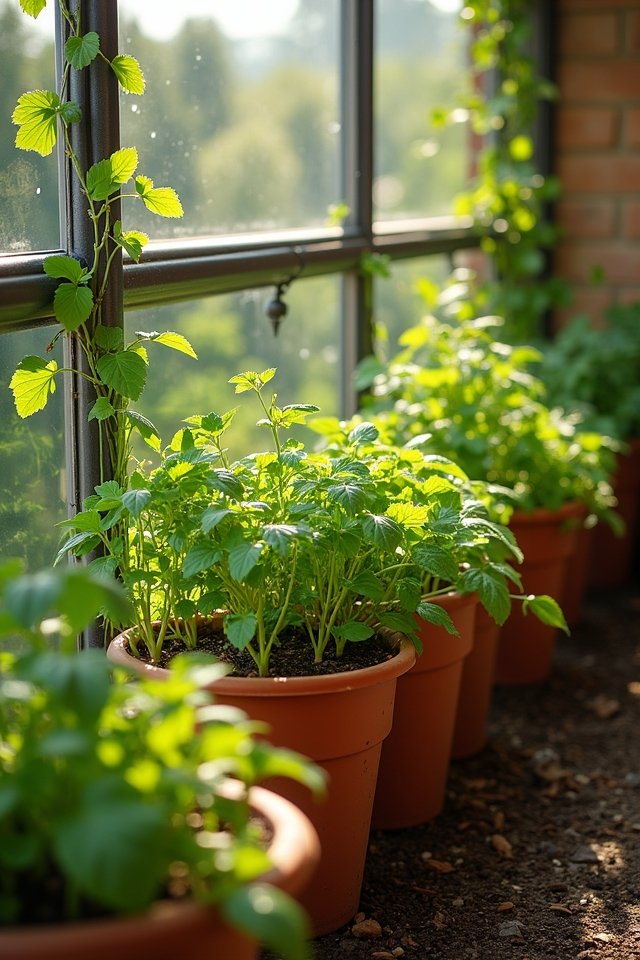
Your balcony garden is buzzing with life, but it also needs a little TLC to thrive sustainably! To keep those plants happy, consider installing drip irrigation. It’s like giving your greens a revitalizing drink without drowning them! This method delivers water right to the roots, minimizing waste and maximizing moisture retention. Plus, you’ll save time—no more lugging heavy watering cans!
Don’t forget to add mulch around your plants; it’s nature’s cozy blanket, keeping the soil cool and damp. When it rains, collect that liquid gold in a rain barrel—your plants will thank you! With these efficient watering practices, your balcony garden will flourish like a vibrant oasis, and you’ll feel like a true eco-warrior! Ready to make a splash?
Frequently Asked Questions
How Much Sunlight Do Balcony Plants Typically Need?
Balcony plants typically thrive on at least six hours of sunlight exposure daily! Think of your plants as sunbathers, soaking up those rays. The orientation of your balcony matters too; a south-facing one is a sun-lover’s paradise! If your space gets less light, consider clever tricks like reflective surfaces to amplify the sun’s warmth. Remember, healthy plants are like happy kids—give them sunshine, and they’ll flourish like wildflowers in a sunny meadow!
What Are the Best Containers for Balcony Gardening?
When choosing containers for your balcony garden, think stylish and practical! Terracotta pots are classic, but lightweight fabric bags offer great drainage and a modern twist. You’ll want materials like recycled plastic or metal that breathe well, keeping your plants cozy. Don’t forget drainage holes! They’re like tiny lifeboats for your plants, preventing soggy roots. Who wants a drowning plant? So, pick containers that are both funky and functional for your green oasis!
Can I Grow Vegetables on a Small Balcony?
Absolutely, you can grow veggies on your small balcony! Just think about your balcony layout—using vertical gardening techniques lets you maximize space. Stack planters, hang pots, or even use trellises for climbing plants like tomatoes or peas. Imagine plucking fresh basil or crunchy lettuce right outside your door! With a little creativity, your balcony can become an urban oasis, filled with vibrant greens and delicious flavors. Who knew small spaces could be so bountiful?
How Do I Prevent Pests in My Balcony Garden?
When it comes to keeping pests at bay, you’ve got to think outside the box—or rather, outside the garden! Using natural repellents, like garlic sprays or neem oil, can work wonders. Plus, consider companion planting. For instance, basil loves to hang out with tomatoes, helping to ward off pesky insects. It’s like having your garden’s bodyguards! With these strategies, you’ll create a thriving, happy balcony garden that’s as delightful as a sunny day!
What Seasonal Plants Work Best for Balconies?
When it comes to seasonal plants for your balcony, think vibrant blooms and aromatic herbs! In spring, try cheerful pansies or fragrant basil—both add color and flavor. Summer’s a blast with zinnias and mint, while fall brings lovely chrysanthemums and rosemary. Picture your balcony bursting with life! Why not mix in some edible flowers, too? They’re not just pretty; they’re tasty! Your balcony will be the envy of the neighborhood—guaranteed!

